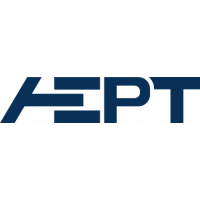Plasma electrolytic oxidation (PEO) is a technique used to create oxide-ceramic coatings on lightweight metals, such as aluminium, magnesium, and titanium. PEO is known for producing coatings with high corrosion resistance and strong adhesion to the substrate. The process involves generating short-lived microdischarges on the material surface through anodic dielectric breakdown in a conductive aqueous solution. To investigate single microdischarges during PEO, a single microdischarge setup was developed, where the active anode surface is reduced to the tip of a wire with a diameter of 1 mm. In this work the focus is on the effect of electrolyte concentration, anode material, and electrical parameters on the microdischarges. The electrolyte is composed of distilled water with varying concentrations of potassium hydroxide (0.5 - 4 g/l). High-speed optical measurements are conducted to gain insights into the formation and temporal evolution of individual microdischarges and the induced gas bubble formation. Optical emission spectroscopy is used to estimate surface and electron temperatures by fitting Bremsstrahlung and Planck’s law to the continuum spectrum of the microdischarges. To evaluate the impact of the microdischarges on coating morphology, the resulting oxide layers on the metal tips are analysed using scanning electron microscopy. The study demonstrates that microdischarge behaviour is significantly influenced by the substrate material, treatment time, and electrolyte concentration, all of which impact the coating morphology. Under the conditions studied in this work, aluminium exhibits longer microdischarge and bubble lifetimes, with fewer cracks on the top layer of the coating, whereas titanium showed faster, shorter-lived bubbles due to more rapid microdischarge events.
| Field | Value |
|---|---|
| Publisher | |
| Authors | |
| Release Date | 2025-07-02 |
| Identifier | 5656f647-6b03-4d4c-8c4e-923336c6ee36 |
| Permanent Identifier (URI) | |
| Is supplementing | |
| Plasma Source Name | |
| Plasma Source Application | |
| Plasma Source Specification | |
| Plasma Source Properties | A specialised setup for investigating single microdischarges (SMDs) during PEO was developed based on a quartz-glass tube, enabling optical line-of-sight access to the discharge site. The anode is reduced to a 1 mm diameter aluminium (99.9995%) or titanium (99.99%) wire, promoting isolated discharges at the tip, each lasting a few to several hundred microseconds. The wire is mounted inside the tube via a PEEK holder and sealed with a heat-resistant Viton O-ring, protecting the insulation against local temperatures reaching several thousand kelvin. The stainless steel cathode is positioned inside the cell, which is filled with approximately 180 ml of distilled water with varying amounts of KOH electrolyte (0.5–4 g/l), with a conductivity of 2–16.7 mS/cm and a pH around 12. The system operates in galvanostatic DC mode with 1.27 A/cm^2 and a maximum voltage output of 800V. |
| Plasma Source Procedure | PEO microdischarge ignitions: Distilled water with the addition of 0.5 to 4 g/l potassium hydroxide serves as electrolyte for the PEO process. The anode wire (Al, Ti) is prepared with a commercial polishing tool to remove any residues from previous experiments and fixed with a PEEK holder inside the electrolytic cell. A power supply operated in a galvanostatic DC mode with 1.27 A/cm^2 can initiate the process. |
| License | |
| Plasma Medium Name | |
| Plasma Medium Properties | Plasma electrolytic oxidation is performed with a mixture of distilled water with the addition of 0.5 to 4 g/l potassium hydroxide. |
| Plasma Medium Procedure | Distilled water is mixed with the KOH electrolyte before being added to the electrolytic cell. |
| Plasma Target Name | |
| Contact Name | Jan-Luca Gembus |
| Plasma Target Properties | 1mm Aluminium wire Puratronic 99.9995% and 1mm titanium wire Alfa Aesar 99.99% |
| Plasma Target Procedure | The anode wire is polished with a commercial polishing tool before each treatment. |
| Contact Email | |
| Plasma Diagnostic Properties | A high-speed camera (VEO 410L IMP, Vision Research) operating at 150000fps is combined with backlighting (UHP 100W/120W 1.0, Phillips), enabling the observation of individual bubbles and microdischarges. Optical emission during the PEO process is measured using a compact, low-resolution spectrometer (QE65000, Ocean Optics). Surface morphology and elemental composition of the resulting coating are analysed using a scanning electron microscope (SEM, JSM6510, JEOL) in combination with an energy-dispersive X-ray spectrometer (EDX, XFlash Detector 410-M, Bruker). |
| Public Access Level | Public |
| Plasma Diagnostic Name | |
| Funding Agency | |
| Project | |
| Subproject |
Data and Resources
- Figure 1-14 and S01-S09zip
A single compressed file contains all the figures used in the manuscript....
Download


![[Open Data]](https://assets.okfn.org/images/ok_buttons/od_80x15_blue.png)